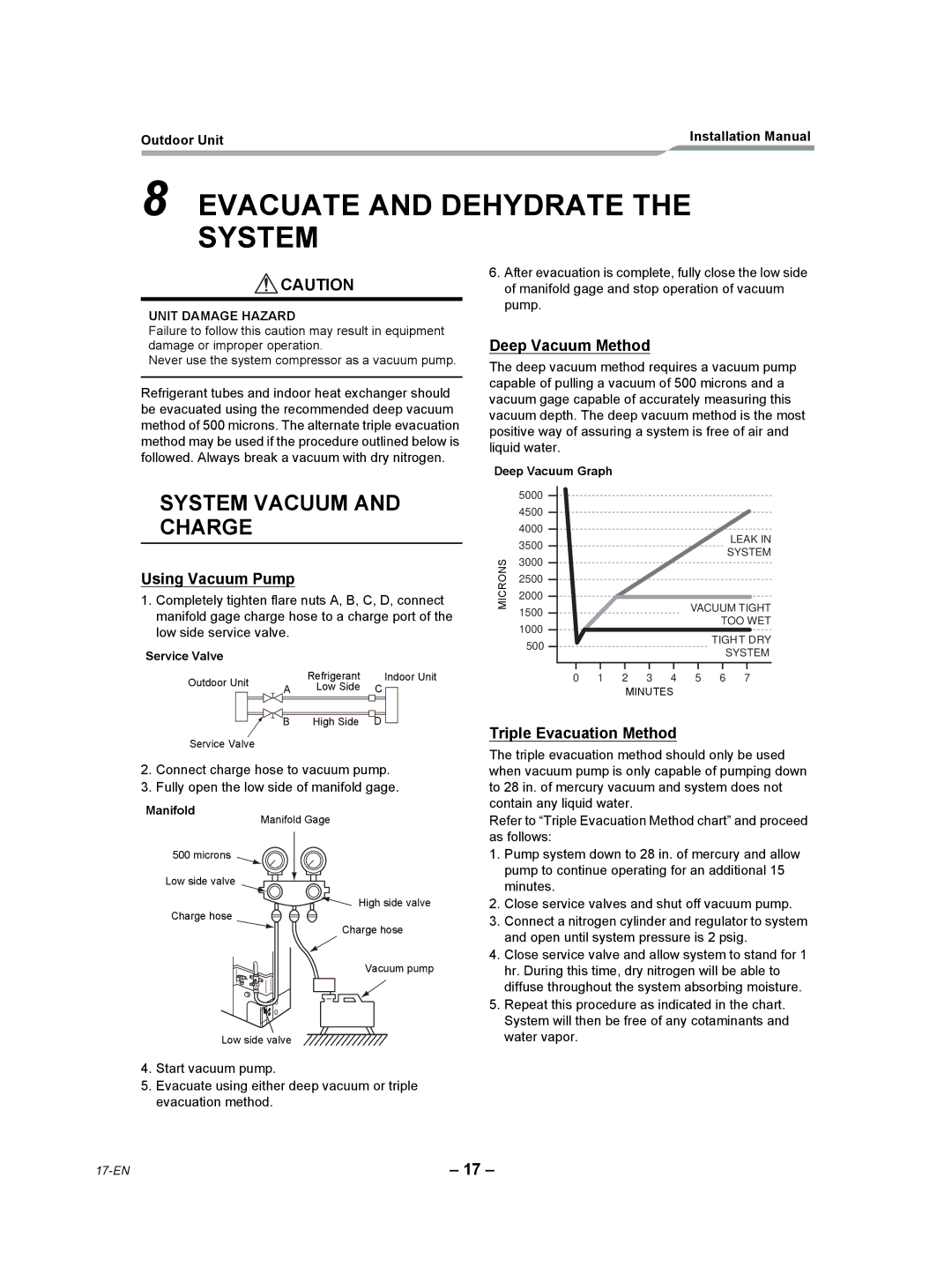RAV-SP420AT2-UL, RAV-SP300AT2-UL, RAV-SP360AT2-UL specifications
Toshiba has established itself as a leader in HVAC technology, providing solutions that cater to diverse climate control needs. Among its notable models are the Toshiba RAV-SP300AT2-UL, RAV-SP420AT2-UL, and RAV-SP360AT2-UL. Each of these units is designed to deliver efficient cooling and heating, suitable for both residential and commercial applications.The RAV-SP300AT2-UL is a compact air conditioning unit that emphasizes energy efficiency. With a cooling capacity of 30,000 Btu/h and a heating capacity that mirrors this output, the unit is an ideal choice for moderate-sized spaces. One of its key features is the use of inverter technology, which allows the compressor to adjust its speed according to the cooling demand. This not only reduces energy consumption but also ensures a consistent indoor climate.
Moving to the RAV-SP420AT2-UL, this model offers higher performance with a cooling capacity of 42,000 Btu/h. It maintains energy efficiency while providing robust climate control capabilities. The RAV-SP420AT2-UL is equipped with advanced filtration systems that enhance indoor air quality by removing dust, allergens, and other pollutants. Additionally, the unit features a quiet operation mode that minimizes noise, making it suitable for environments where comfort and tranquility are paramount.
The RAV-SP360AT2-UL occupies a middle ground with a cooling capacity of 36,000 Btu/h. Like its counterparts, it harnesses inverter technology for optimum efficiency. This model is particularly noted for its versatility, as it can effectively serve a wide range of commercial applications. It also boasts smart technology integration, allowing users to control their HVAC systems remotely via smartphones or smart home systems.
All three models are constructed with durable materials designed to withstand varying weather conditions. They also feature a self-diagnostic system that assists technicians in identifying issues quickly, thereby minimizing downtime. Furthermore, Toshiba's commitment to sustainability is evident in these units, as they are designed with eco-friendly refrigerants that comply with global environmental standards.
In conclusion, Toshiba's RAV-SP300AT2-UL, RAV-SP420AT2-UL, and RAV-SP360AT2-UL represent the forefront of HVAC innovation. With their unique features, energy efficiency, and advanced technologies, these air conditioning systems provide reliable performance tailored to the needs of users, ensuring comfort and satisfaction in any environment.

